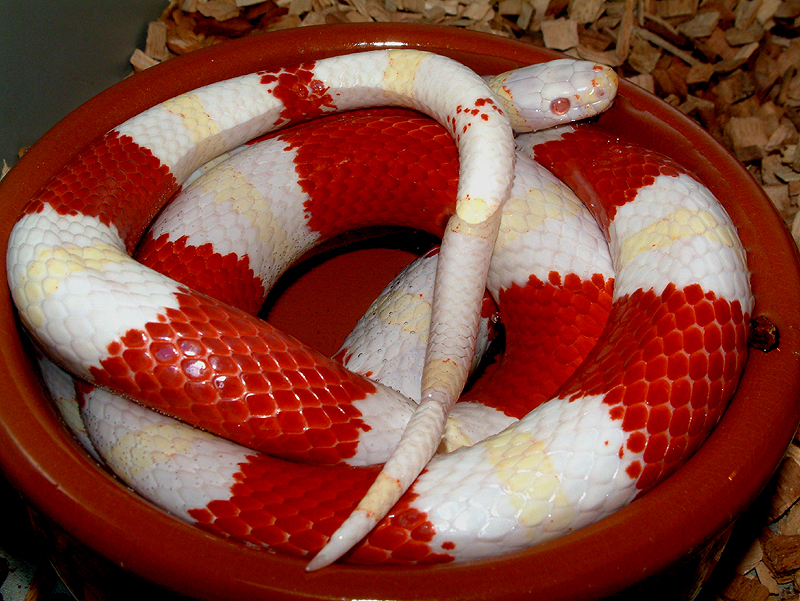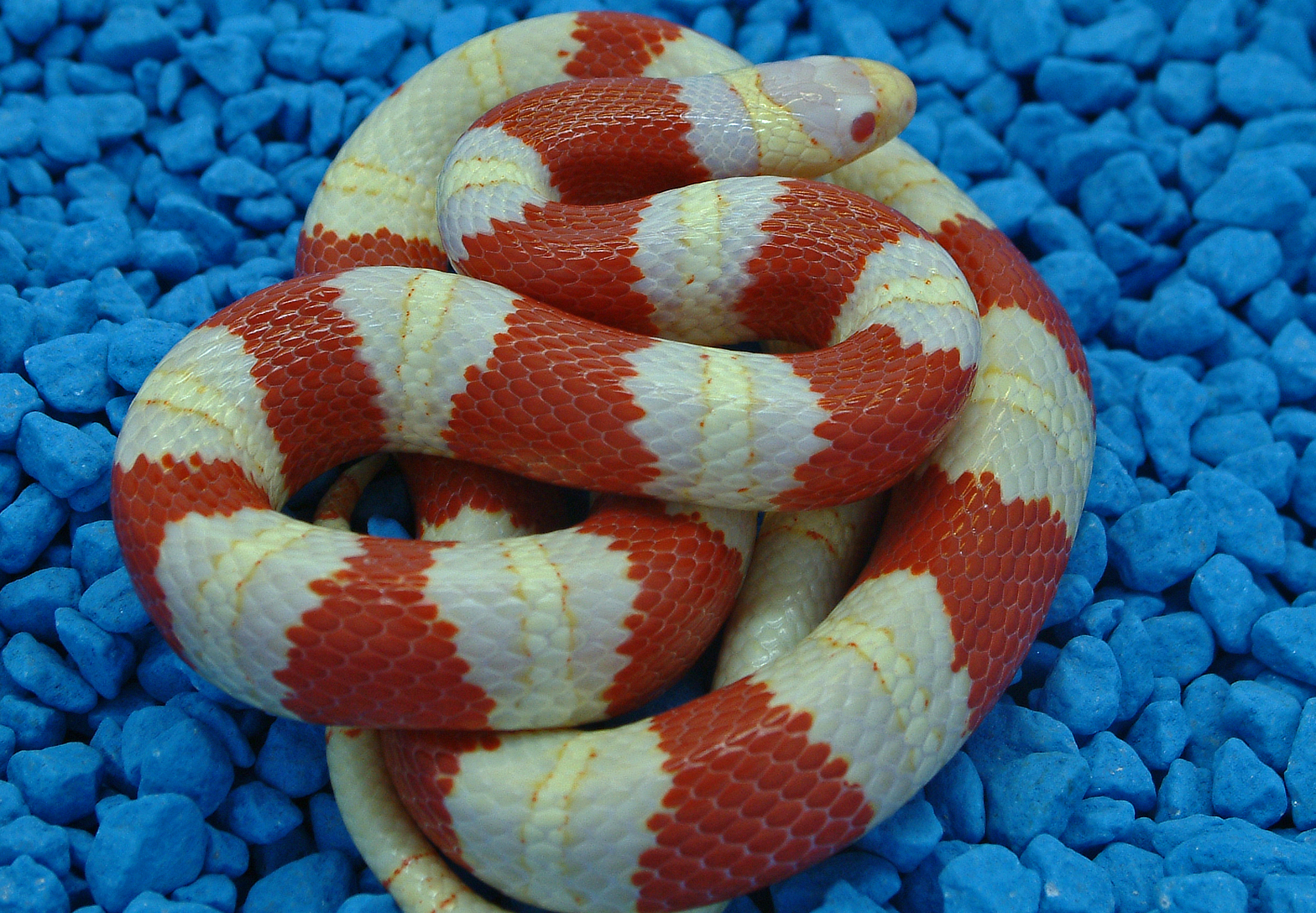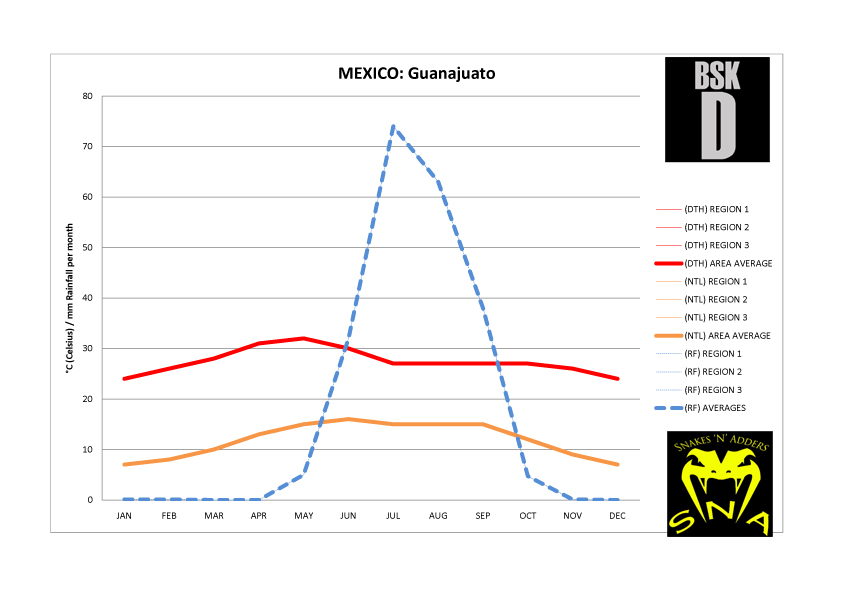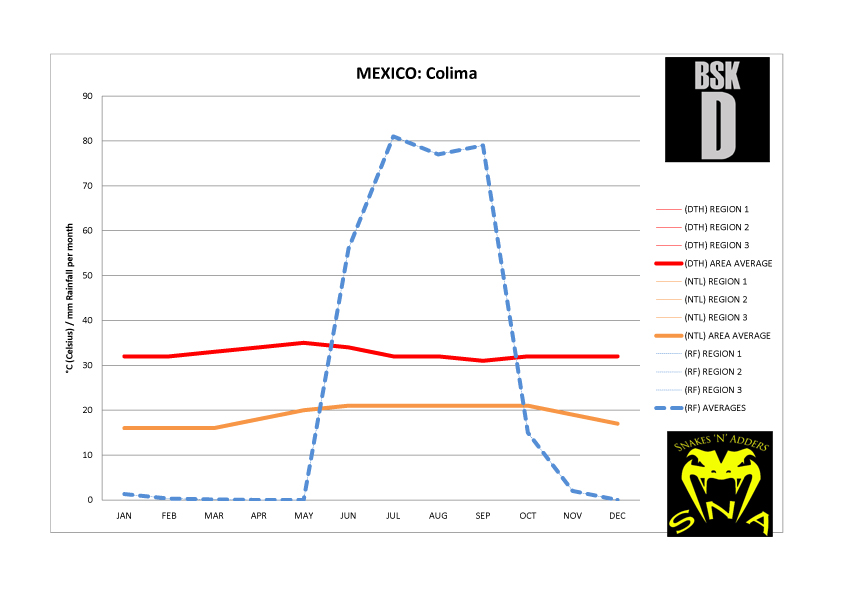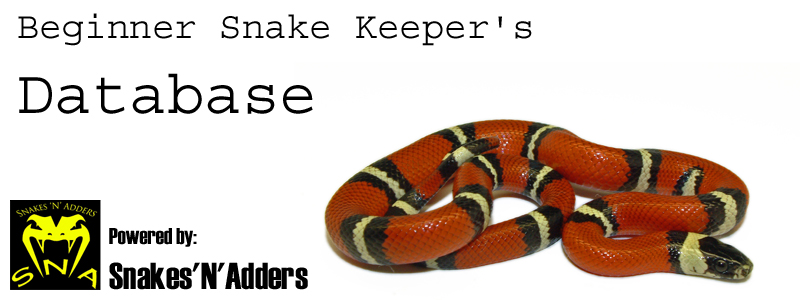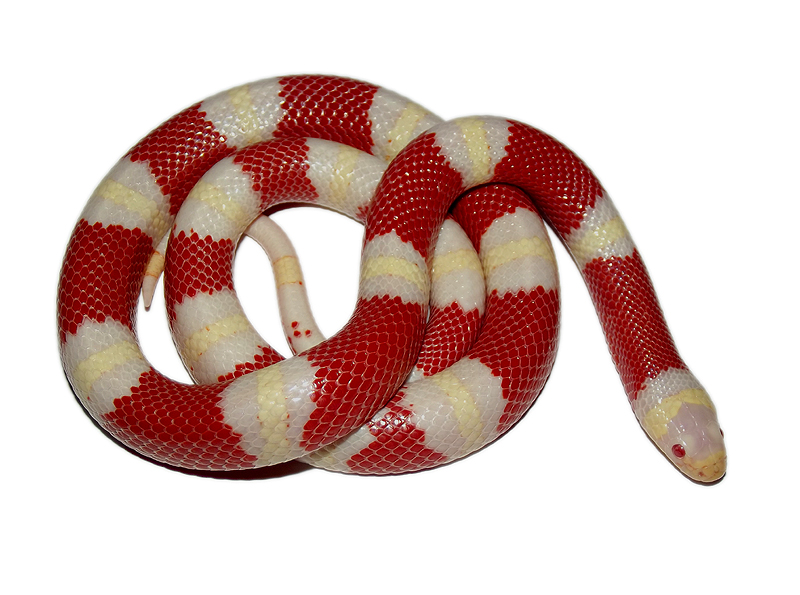
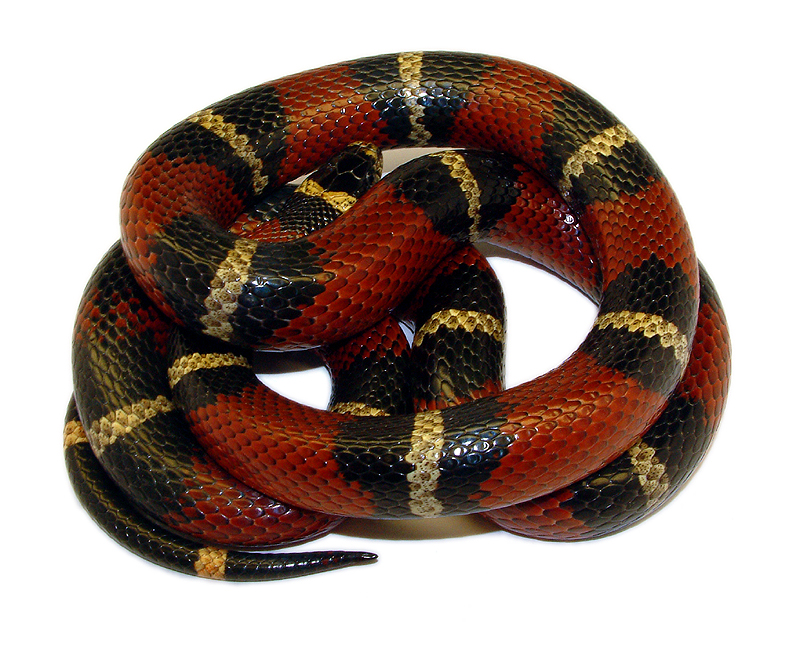
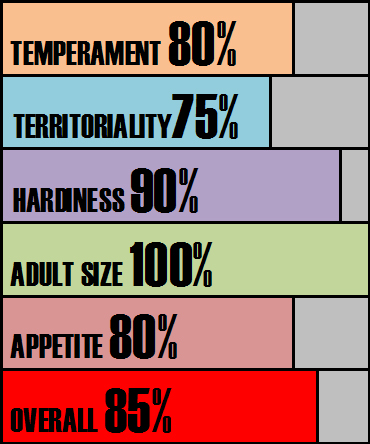

Species Notes based on experiences:
Milk Snakes are examples of batesian mimicry. Milk Snakes have evolved to impersonate the deadly Coral Snake (Micrurus). The old saying Red next to Yellow…kill a fellow, Red next to Black….venom lack or friend of jack. This is in reference the way the annulations or rings of the milks snake’s pattern are arranged. Save for adult size, the amount of black pigment present and overall build of the snake Milk Snakes are generally very similar snakes to consider as pets regardless of subspecies. Some species have been excluded from consideration because of their much smaller than average size such as the Red Milk Snake (Lampropeltis triangulum syspila) which may require lizards as first prey to establish in captivity. All the Milk Snakes listing on this site will generally feed unassisted on rodent prey from birth. This snake has now been rolled into the Polyzona Milk snake (Lampropeltis polyzona) along with three other subspecies listed individually on this site. Look through the images and decide for yourself but I believe this to be folly. We have bred for ‘Pueblan’ standards for 30 years and’Sinaloan’ Standards for 30 years. Why on earth would we want to mix them? Bear in mind taxonomic decisions are based upon shifting sands, and what is de rigour one minute is old news the next. We could have mixed species that in time may well be separated again. Nelson’s Milk Snakes were incredibly popular in the late 1990’s and early 2000’s. This was the height of Tri-colour King snake and Milk Snake breeding. What helped create the popularity around the Nelson’s Milk Snake was the albino variant that was available. At the time this was pretty much unique amongst the Milk Snakes and much clamour ensued. As other morphs and cultivars came to the fore from other subspecies of Milk Snake Nelson’s Milk Snakes popularity began to wane. This is a real shame as this snake has a lot to offer as a beginner species.
Score analysis:
When considering temperament, Nelson’s Milk Snakes are generally very well behaved. They can be nervous or flighty snakes like some of the other Milk Snakes listed here as youngsters. If defensive behaviours occur, this will include tail rattling and vacating the contents of the cloaca. Biting is incredibly rare, the preoccupation with nervous Milk Snakes is to escape. With patience and time the snake will usually readily calm down and by the time the animal is a year of age it will be fully compliant.
Territory issues are nearly always more prevalent than true temperament issues. If startled snakes may rattle their tail and throw coils of their body in an agitated manner. This usually ends up covering the head (on purpose), if this fails a Milk snake may dart away trying to escape the human that disturbed it.
This snake is more subtropical than many of the other Milk Snakes although it can occur at altitude inland. Care in captivity is pretty much universal for most Milk Snakes but with this subspecies the presence of a moss box or damp hide is a strong suggestion to aid with shedding. Over subsequent generations this snake has proven itself to be of comparable hardiness to any of the other Milk Snakes discussed on this website.
This is an average size Milk Snake at around 3.5ft in length. Girth and weight are modest and would be easily outweighed by Pueblan and Mexican Milk Snakes of the same length. This may give them a slightly more delicate feel but in reality they are just as robust as the other subspecies listed on this website.
Initially babies may be nervous and flee from food offered on tongs. It can take a good 6 months before the snakes are comfortable strike feeding. Some keepers just default to leaving their snake to it and leave their prey on a tray for them to hoover up in their own time. Milk Snakes are cannibals, they should be housed separately always. In the wild they are reptile feeding specialists taking both other snakes and lizards. Pairing of animals for breeding trials should be done with care.
Tub:
50ltr (exceptional animals would benefit from a vivarium)
Vivarium:
90cm x 45cm x 45cm
Budget rig: -
60cm x 30cm heat pad
On / off thermostat
Digital thermometer to monitor thermostat performance
Warm hide
Cool hide
Water bowl
substrate
Recommended rig (vivarium only): -
150w ceramic heat emitter
Ceramic lamp holder and bracket
Bulb guard
Day night thermostat
Digital thermometer to monitor thermostat performance
Various logs and caves along the thermal gradient
Damp hide
Climbing and exercise branches
Plants and foliage (live or artificial – your choice)
Water bowl
Substrate
UVB light (8w T5 shade dweller 7% kit from Arcadia or equivalent) (optional)
Subterranean section to vivarium for further psychological security (optional)
Climate analysis:
There is a slight amount of variability to this species. Coastal regions see this species occupying tropical forest, this then alternates to deciduous oak forest as altitude begins to increase as we move inland. A gentle cool down for 6 weeks of so to around 15-18°c with a stoppage on feeding would see the animals cycle for winter. This process will also help keep the snakes lean.
Conclusion:
A superb pet species that is beginning to get very scarce in UK collections indeed. More work must be done with this fantastic snake to ensure future generations get to enjoy them. For the love of god do not hybridise with other subspecies now grouped together as Lampropeltis polyzona. Nelson’s Milk Snakes make excellent pets with patience and time.
